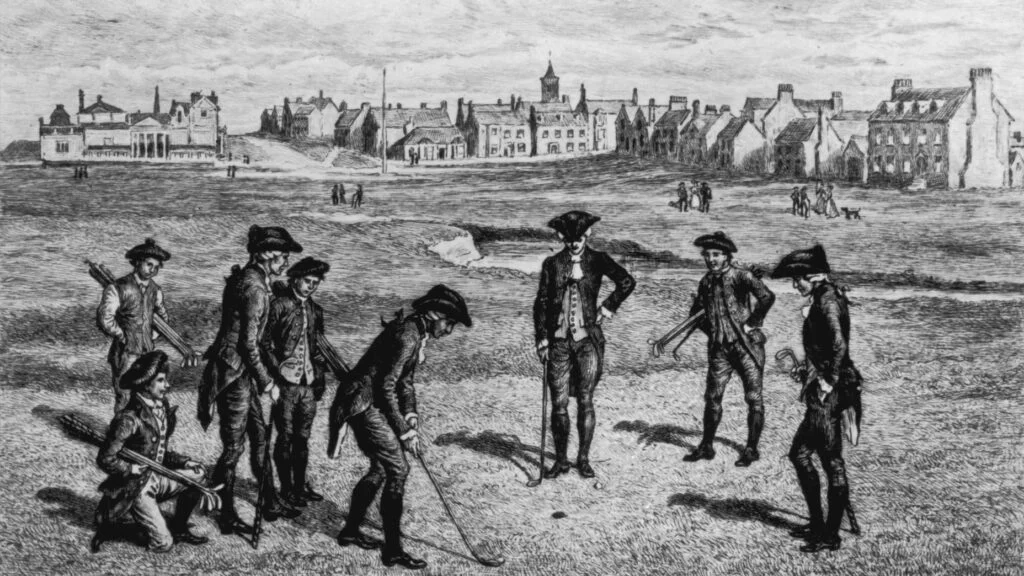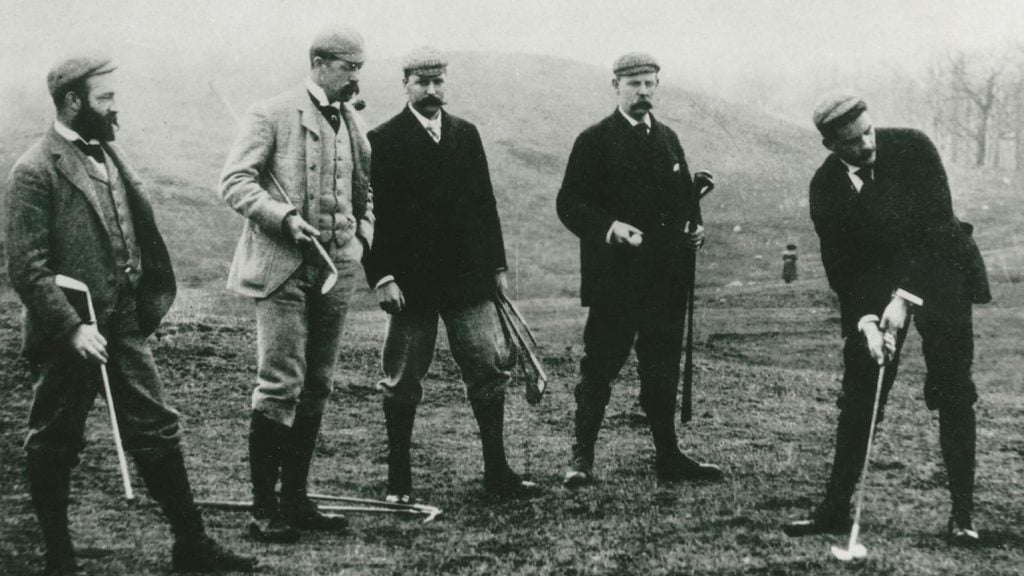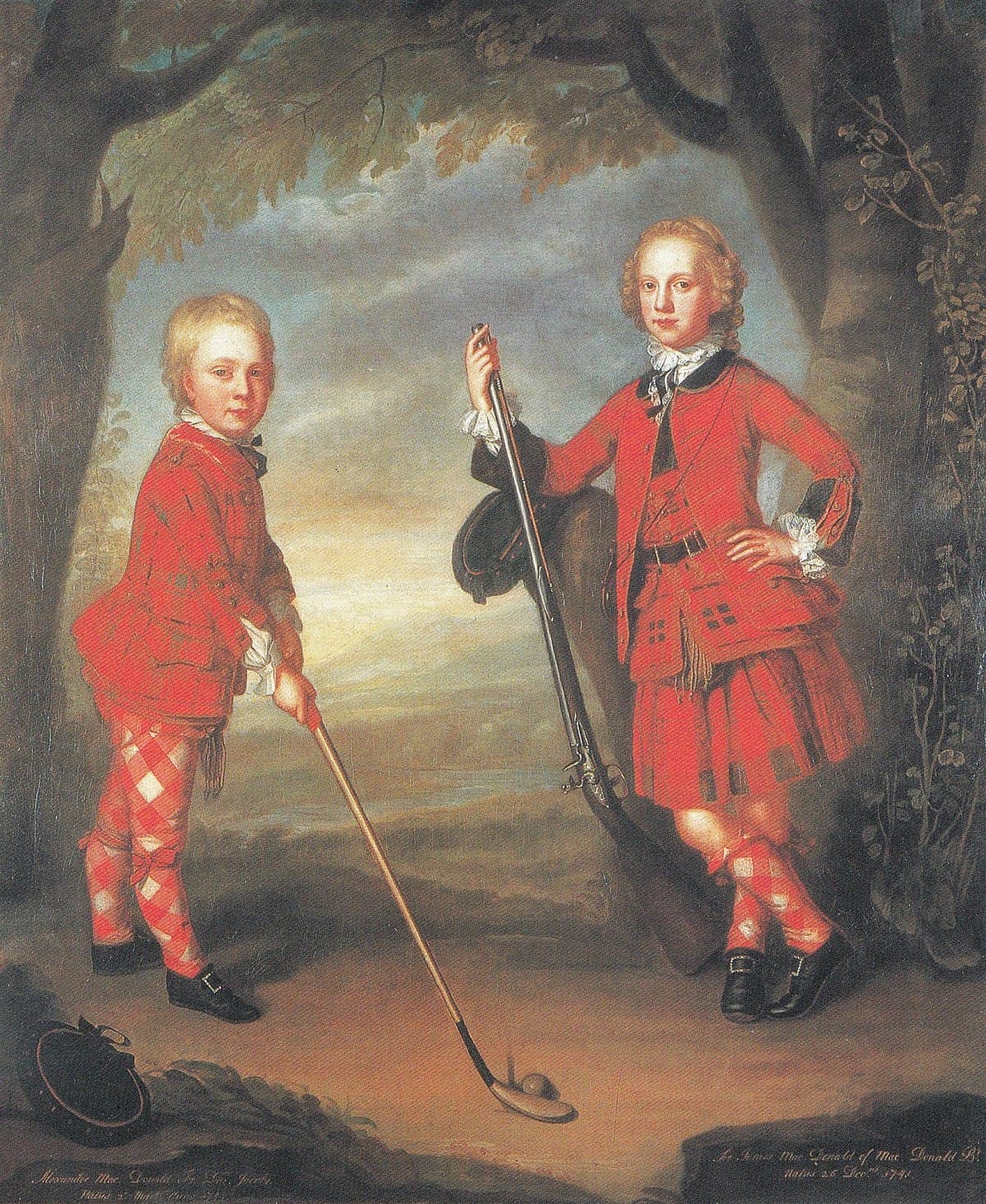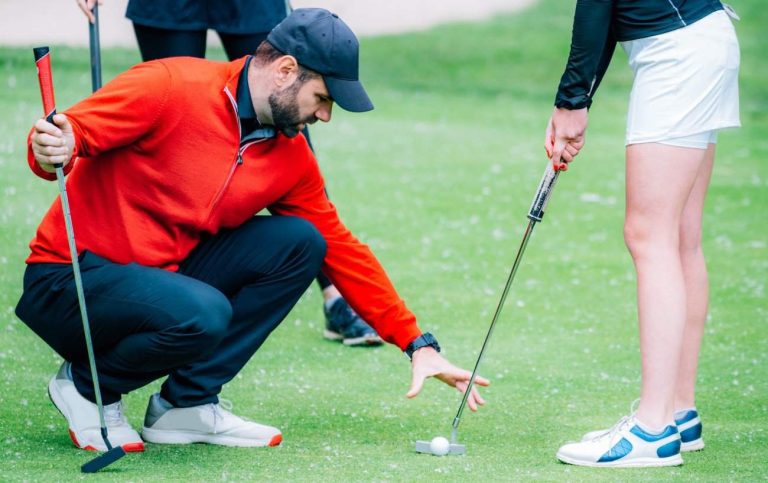Unveiling the Origins: How Was Golf Invented?
Key Takeaways:
- Golf originated in Scotland with early forms of the game and was later developed with the establishment of golf clubs and courses, such as the Royal and Ancient Golf Club of St Andrews.
- Golf spread to Europe and beyond through Scottish soldiers and immigrants, as well as the improved transport system, leading to its popularity in the late 19th century.
- The evolution of golf involved the standardization of rules and equipment, including the development of the Gutty ball and advancements in golf clubs and equipment.
- Golf courses vary in types and famous ones can be found in Scotland and the United States.
- The popularity and growth of golf were fueled by the Industrial Revolution, the establishment of organizations like the USGA, and the growth of golf courses.
- Major championships and the PGA Tour play a significant role in the sport, showcasing the significance of winning all four majors and the dominance of the PGA Tour in the United States.
- Golf terminology is unique to the sport, and golf attire has evolved over time.
- In conclusion, golf has a rich history with its origins in Scotland, has evolved in terms of rules, equipment, and courses, and has gained popularity worldwide through major championships and tours.
Origin of Golf
The origin of golf can be traced back to Scotland, but its influence quickly spread to Europe and beyond. Discover the fascinating journey of this beloved sport and how it evolved from a humble Scottish pastime to a worldwide phenomenon.

Origins in Scotland
Golf has its roots in Scotland. Games resembling golf were played there as early as the 15th century. Scottish monarchs first banned and then allowed the playing of golf, which helped it grow in popularity.
Golf clubs formed and courses were created. These gave golfers a place to meet and play. One famous golf club is the Royal and Ancient Golf Club of St Andrews, which is one of the oldest and most prestigious golf clubs in the world.
Scotland’s soldiers and immigrants spread golf beyond its borders. They introduced it to British colonies like India and Australia. Moreover, golf-like games were already being played in the Netherlands before golf reached their shores. Improved transport in the late 19th century also helped the spread of golf to Europe and other parts of the world.
Scotland’s role in the history and origin of golf is undeniable. It started the game, supported it, and helped it become a global sport. Its heritage lives on to this day.
Early forms of golf in Scotland
Golf’s early versions were played in Scotland centuries ago. Some monarchs banned it, but others let it be. So, golf clubs and courses kept growing in Scotland. In 1754, the Royal and Ancient Golf Club of St Andrews was established, making Scotland the birthplace of golf.
The game spread to Europe and beyond. Scottish soldiers and immigrants traveled with it, to British colonies and further. Early golf clubs started popping up outside of Scotland too. And with improved transportation, golf’s popularity boomed worldwide.
Golf courses started getting more distinct. Famous ones in Scotland, like St Andrews Links, Carnoustie Golf Links, and Royal Troon Golf Club, are now iconic. US courses are also acclaimed for their design and difficulty.
Pro Tip: Learn about sports’ early forms to appreciate their evolution and gain a deeper understanding of their cultural significance.
Banned and allowed by Scottish monarchs
Scottish monarchs had a big part in golf’s early days. King James II was one who banned it in 1457, as he thought it might stop archery practice in times of war. But, later monarchs, like King James IV and King Charles I allowed and even encouraged the game.
This affected how golf was seen. When it was banned, it was exclusive and desirable. But when it was allowed, it was open to more people. This changed how it was perceived and played.
These rulers’ decisions were key in taking golf from being a distraction from military training to a popular game across social classes. Their actions have left a lasting legacy.
These early rulings helped pave the way for golf’s modern-day success. From restrictions for military reasons, to leisure pursuits enjoyed today, Scottish monarchs have had an enormous influence on golf. Their actions are key to understanding how golf has changed over centuries and become what it is today.
The development of golf clubs and courses in Scotland
Golf in Scotland began to take shape. Various clubs were made to promote and regulate the sport, and rules and equipment were standardized. A significant milestone in this process was the Royal and Ancient Golf Club of St Andrews. Established in 1754, this club not only spread the game but also shaped it with early standardized rules.

Scotland’s dedication to golf led to the creation of iconic courses. These courses draw avid players from around the world who want to experience the birthplace of golf.
The development of golf clubs and courses in Scotland has been crucial in the history and future of this beloved sport. From its beginnings to standardized rules and iconic venues, Scotland’s contribution has secured its place as the home of golf.
The establishment of the Royal and Ancient Golf Club of St Andrews
The Royal and Ancient Golf Club of St Andrews is a big deal in golf’s history! Founded in Scotland, this prestigious club dates back to the 18th century. It had a huge role in setting up rules for the game. This unified set of rules helped golf to be more popular.
Plus, the club was key in building and keeping golf courses in Scotland. It also shaped the Scottish golf culture. While there are other old golf clubs outside of Scotland, The Royal and Ancient Golf Club is one of the oldest and most well-known.
Today, The Royal and Ancient Golf Club still governs golf worldwide. It’s like the haggis of Scotland – invented here, but spread quickly around the world just like a ball on a downhill slope!
Spread of Golf to Europe and Beyond
Golf has its roots in Scotland. Scottish rulers banned and later allowed it, leading to the emergence of golf clubs and courses. The Royal and Ancient Golf Club of St Andrews, founded in 1754, was instrumental in making golf popular in Scotland.
The game spread to Europe and beyond, through Scottish soldiers and immigrants. It also reached British colonies due to improved transport systems in the late 19th century.
Locals adapted golf-like games to suit their culture, giving the sport richness as it spread further. Kolkata Royal Golf Club in India, which was established in 1829, is one of the oldest non-Scottish golf clubs. This shows that golf quickly took root outside Scotland.
Before it reached continental Europe, people had to make do with ‘Smack the Small Ball with a Stick’.
Golf-like games in the Netherlands and continental Europe
Golf-like games had a presence in the Netherlands and other parts of continental Europe. These were similar to golf and were enjoyed by the local population. Scottish soldiers and immigrants familiar with golf brought these games to British colonies, thus increasing their popularity.
Interestingly, early golf clubs were established beyond Scotland in continental Europe. This shows the game’s growing reach beyond its origins.
Pro Tip: To understand how different cultures embraced the same sport and spread golf’s popularity, it is useful to explore the history of golf-like games in various regions.
Scottish soldiers and immigrants brought their passion for golf to faraway lands, conquering new places with their swings and divots.
Scottish soldiers and immigrants spreading golf to British colonies
Scottish soldiers and immigrants played a key role in distributing golf across British colonies. As they traveled and settled abroad, they took their love for golf with them. These early golfers brought the game to India, Australia, Canada, and South Africa.
The Scots’ presence furthered the game’s growth in these colonies. They built clubs and courses, and introduced the sport to the local population.
The contribution of Scottish soldiers and immigrants to spreading golf cannot be underestimated. They shared their knowledge and enthusiasm, and organized tournaments and developed golf infrastructure. This was essential for golf’s growth beyond Scotland.
To ensure golf’s success and popularity in British colonies, locals must be encouraged to get involved. By providing access to affordable equipment and training, and hosting events and tournaments, interest in the game can be sparked. Not only that, highlighting the benefits of playing – such as physical fitness, mental agility, and social interaction – can attract more people.
By recognizing and appreciating the Scottish soldiers and immigrants who contributed to golf’s worldwide success, we can acknowledge their part in shaping this global sport. Their passion for golf and willingness to share it has had a lasting effect on its popularity.
Early golf clubs outside of Scotland
The early development of golf clubs outside of Scotland can be traced back to Scottish soldiers and immigrants bringing the sport with them to British colonies. These pioneering people spread love for the game to new lands, leading to the establishment of golf clubs around the world.
The Scots took golf to England, Ireland and other European countries. These clubs played a major role in making the sport popular beyond its Scottish roots. Scotland was still the heart of golf, yet these early golf clubs outside of Scotland readied the world for the sport’s global growth and fame.
As an example, The Cape Golf Club in South Africa was founded in 1885 – one of the oldest golf courses outside Scotland. This club brought golf to South Africa and also became a hub for promoting the game in other parts of Africa.
Overall, it was the efforts of Scottish soldiers and immigrants that allowed golf to take root outside of Scotland. These early golf clubs were the basis for the global expansion and worldwide appeal which we observe today.
From Scotland’s greens to the world’s fairways, golf’s popularity rose with better transport. Even with a bad slice, you can still ride in style!
Improved transport and the popularity of golf in the late 19th century
Improved transport in the late 19th century made golf more popular. Railway and steamship systems became more efficient and accessible, so people could travel farther. This led to more people visiting golf courses and playing the sport.
Scottish soldiers and immigrants took their love of golf with them to British colonies, like Canada, Australia and India. They set up golf clubs and courses, helping golf to grow.
Equipment and technology also improved. Golf clubs and balls became more standardized and advanced. This made it easier for players to hit the ball further and more accurately. Both amateurs and professionals enjoyed the sport more.
To understand the impact of improved transport on golf, visit historic courses from this period. They often have architectural features from Scotland and modern transportation infrastructure. Visiting these sites helps to understand how access to golf expanded.
Golf has changed a lot over the years, from ancient Scottish monarchs to modern golf clubs. It’s got more twists and turns than a Tiger Woods swing!
Evolution of Golf
The evolution of golf has seen significant changes over the years, from the standardization of rules and equipment to the transformation of golf courses. Join us as we unravel the fascinating journey of this beloved sport and explore the impact these changes have had on the game. From the early days to the present, we’ll discover how golf has evolved and adapted, shaping the way we play and enjoy this timeless sport.
Standardization of Rules and Equipment
In the early stages of golf, there was no standardization of rules or equipment. But, over time, efforts were made to create consistent guidelines. These efforts led to standardization of rules and equipment.
Let’s visualize this:
| Standardization of Rules and Equipment |
|---|
| Early stages: Lack of standardization |
| Establishment of consistent guidelines |
| Ensuring fairness for all players |
To understand how this process started, initially there was no uniformity in rules and equipment. But, as golf became more popular, organizations formalized them. A major step was the oldest surviving rules of golf, which gave a foundation for standardizing gameplay. Also, equipment like the Gutty ball and clubs improved.
Historical records show different types of golf courses throughout history. They varied in design and layout, but still helped shape modern-day courses.
Explore the progress in standardized rules and equipment by playing golf! Millions around the globe love this pastime, full of possibilities for growth and enjoyment. Start your journey today!
The oldest surviving rules of golf are like my love life – full of confusing strokes and penalties!
The oldest surviving rules of golf
Golf, thought to have begun in Scotland, follows rules that changed over time. The oldest rules offer insight into early stages of the game. They created the foundation of golf and set the standard for today.
Dating back to the 18th century, these ancient rules give us a peek into how early players played. They show tee placements, stroke limits per hole, and penalties for wrongdoings. These rules kept order and fairness during matches, setting the model for good sportsmanship.
These earliest rules also inform us of the simplicity of early golf. Players had to rely on their knowledge of the course and their skill with clubs and shots. This focus on strategy added to the game’s complexity.
Exploring the old rules of golf helps us appreciate how far the sport has come. It reminds us of golf’s history and encourages us to keep traditions while also embracing new developments. Don’t miss out on the foundational aspects that still shape our experience with golf!
From wooden clubs to feather-stuffed balls, golf changed with the Gutty ball. Imagine the chaos of a game with actual guts!
The development of the Gutty ball
The Gutty ball was a game-changer. It replaced the costly, handmade featherie balls with a standardized, durable alternative. This new type of ball was made of gutta-percha, a material from tropical tree sap.
Golfers everywhere celebrated! The Gutty ball was much more affordable and could be mass-produced. Plus, its rubber-like texture provided superior playability.
The Gutty ball not only changed the accessibility of golf, but also led to advancements in club designs and techniques. Players had to adjust their strategies based on the characteristics of this new ball.
It laid the foundation for further innovations in golf equipment. The modern golf we know today is a testament to this historic milestone.
If you want to experience a piece of golf history, get a replica Gutty ball and play a round. You’ll appreciate how far the sport has come – from wooden clubs to high-tech drivers. Golf clubs and equipment have seen many changes – and yet, through it all, our ability to blame them for our terrible swings remains a constant!
Improvement in golf clubs and equipment
Golf clubs and equipment have drastically changed and evolved over time, with various innovations being made to improve performance. The oldest surviving rules of golf suggest clubs were once made of wood, such as ash and hazel.
In the mid-19th century, a rubber-like core Gutty ball was introduced, offering more distance and control than the featherie ball. Subsequent advancements in technology led to iron club heads and steel shafts, offering greater accuracy and control during play.
More recently, adjustable drivers have allowed players to customize club settings to optimize their performance, based on individual swing characteristics. Golf balls and grips have also seen improvements – modern golf balls are designed for distance, spin control and durability, while grips now come in various materials for comfort and grip strength.
Technology continues to push the boundaries of what is possible with golf clubs and equipment. 3D printing and data analytics now enable manufacturers to create more precise and tailored products for individual players.
Overall, the improvements in golf clubs and equipment have revolutionized the game, giving players better tools to enhance their performance. As technology advances, it will be exciting to see how these advancements further shape the future of golf.
Evolution of Golf Courses
Golf courses have changed a lot over time. From Scotland’s traditional links courses to inland parkland courses, each offers its own unique challenge and beauty. Scotland holds a special place in golf’s history, with iconic courses like St Andrews.
Golf also soon made its way to the US, with famous courses like Augusta National Golf Club, Pebble Beach Golf Links, and Pinehurst Resort. It has spread further too, with amazing courses around the globe like Australia’s Royal Melbourne Golf Club and South Africa’s Gary Player Country Club.
Technology and design also keep evolving golf courses. This ensures that both professional players and amateur enthusiasts can enjoy challenging and beautiful courses and facilities.
Golf courses come in all shapes and sizes. But whatever your swing, there’s a fairway for you – and a hazard waiting too!
Different types of golf courses
To give an idea of the different types of golf courses, we can group them based on factors such as design, length, difficulty, and location. This table shows this:
| Type | Description |
|---|---|
| Links Courses | On sandy coasts, with dunes. |
| Parkland Courses | In parks, with trees and manicured fairways. |
| Desert Courses | In dry areas, with unique designs. |
| Mountain Courses | In mountains, with elevation changes and views. |
| Resort Courses | At luxury resorts, with extra amenities. |
Each type of golf course has its own feel. Links courses have winds and bunkers. Parkland courses have trees and require precision. Desert courses have cacti and rocks. Mountain courses have views but can be tough. Resort courses have scenery and extras.
Plus, there are niche versions like executive or par-3 courses for shorter games or practice. These are great for beginners or those wanting to improve accuracy.
Golfers can find the perfect course. Scotland offers links courses with roughs to lose balls in. Or, try a resort course with its tropical sights. The choice is yours!
Famous golf courses in Scotland
The remarkable success of golf in Scotland has led to the building of some world-renowned courses.

They are famed for their age-old history, intricate designs, and mesmerizing scenery. Here are five famous Scottish golf courses:
- St Andrews Links: Often known as the “Home of Golf,” St Andrews Links is one of the oldest and most respected golf courses worldwide. It features seven courses, like the renowned Old Course, which has hosted several Open Championships.
- Turnberry: Situated on the Ayrshire coast, Turnberry is celebrated for its beautiful views of the Isle of Arran and Ailsa Craig. Its Championship Course has held four Open Championships and is recognized for its tough obstacles.
- Muirfield: Located in East Lothian, Muirfield is famed for its classic links design and strategic layout. This old course has had various Open Championships and is considered one of Scotland’s best.
- Carnoustie Golf Links: In Angus, Carnoustie Golf Links is known for its hard nature, with thin fairways, steep bunkers, and unpredictable weather. It has also hosted some Open Championships.
- Royal Troon Golf Club: On the west coast of Scotland, Royal Troon Golf Club holds both a championship course and a smaller nine-hole course. Its Old Course has had several prestigious tournaments, including The Open Championship.
These renowned Scottish golf courses provide not only a great game of golf but also the opportunity to follow in the footsteps of legendary players who have played on these grounds throughout history.
In addition to these famous golf courses, Scotland has other amazing golf courses that display its superb countryside and splendid golfing heritage.
So if you love golf or simply adore extraordinary views, a journey to Scotland’s renowned golf courses is an experience you don’t want to miss!
Come and try these legendary courses and feel the thrill of each swing. Join the club of golfers who have tested their skills on these historic fairways and make memories that will last forever. Visit Scotland and uncover the charm of its renowned golf courses!
Golf courses in the United States
Golf in the U.S. has experienced a surge in popularity since the 19th century. This is due to improved transportation and increasing interest in the game. Golf clubs outside of Scotland were created, allowing players to practice and compete.

The industrial revolution and mass production of golf clubs saw a rise in demand for golf courses. Major championships such as the U.S. Open and PGA Championship showcased top-level competition on challenging courses and drew in spectators. Winning all four majors, known as the Grand Slam, became a highly sought-after feat.
Interestingly, each course in the U.S. has its own distinct features and challenges, ranging from renowned courses like Pebble Beach and Augusta National to local municipal courses. This diversity adds depth and excitement to the sport for players across different regions. The growth of golf has truly been par for the course in shaping our obsession with tiny white balls and hard-to-find fairways.
Popularity and Growth of Golf
The sport of golf has witnessed a remarkable rise in popularity and growth throughout its history. From the industrial revolution that spurred mass production of golf clubs to its widespread adoption in the United States, and the exhilarating major championships and the PGA Tour, the game has captivated enthusiasts worldwide. The factors that contributed to its enduring appeal are as diverse as they are intriguing.
Industrial Revolution and the Mass Production of Clubs
The Industrial Revolution was a game-changer for the history of golf. It advanced the manufacturing process and technology, which enabled the mass production of golf clubs.
Mechanization and factories made the clubs more accessible and affordable. Standardized production methods also brought consistent quality.
Steel shafts replaced wooden shafts. This advancement improved durability and flexibility, enhancing the performance of clubs. The use of materials like hickory for club heads further improved playability.
Thanks to mass production, more people had access to affordable and well-made golf clubs. This increased the sport’s participation and led to the establishment of more golf courses and clubs worldwide.
In conclusion, the Industrial Revolution and the mass production of clubs had a major, long-lasting impact on the history and development of golf.
Golf’s Popularity in the United States
The USGA established standardized rules of golf, creating fair play across all courses. This further contributed to Golf’s Popularity in the United States.
The growth of golf courses in the U.S. allowed more people access to the sport. Plus, major championships like the Masters, U.S. Open, British Open, and PGA Championship, gained immense popularity.
The Grand Slam, a feat of winning all four major championships, added to the appeal of golf. Only a select few have achieved this.
The PGA Tour showcased world-class talent and attracted sponsors and fans. Its high level of competition and exciting events contributed to Golf’s Popularity.
In conclusion, industrial advancements, standardized rules and equipment, growth of golf courses, major championships that captivated audiences, and the thriving PGA Tour, all played a role in Golf’s Popularity in the United States.
Establishment of the USGA
The USGA, or United States Golf Association, was founded in 1894 and had a big role in the growth of golf in the country. It set a uniform set of rules to be followed by all players. It also advised course designers on how to create fair courses which enhanced the playing experience. Moreover, it organized major events such as the U.S. Open and Amateur Championships, boosting public interest in the sport. Golf got hugely popular in the U.S., creating a booming industry of golf courses.
Growth of golf courses in the United States
The growth of golf courses in the US is due to various reasons. The Industrial Revolution saw mass production of clubs, making the sport open to more people. The USGA also helped by regulating the game and increasing the number of golf courses.
Four major championships – The Masters, U.S. Open, The Open Championship, and PGA Championship – have driven demand for more courses. They also make the sport attractive to pros and enthusiasts.
In recent years, technology and course design have improved, allowing for more unique courses that cater to all levels of players. This has caused a surge in the construction of golf courses.
So, thanks to increased accessibility, the USGA, and major championships, the number of golf courses in the US has grown. And as golf captures people’s attention, this trend is likely to continue.
Winning all four majors in golf is like a miracle – it’s a feat only a few have achieved, and puts you in a league of legends.
Major Championships and the PGA Tour
Major Championships and the PGA Tour are paramount for professional golf competitions. These showcase the top skill and talent in the sport, drawing players from all over. They have a long history and are pivotal in forming today’s golf.
The Majors, such as The Masters, the U.S. Open, The Open Championship (British Open), and the PGA Championship, are the most prestigious tournaments. Winning one of these is a huge accomplishment for any golfer, symbolizing their ability to do well under pressure and compete against the best.
The Grand Slam of Golf is winning all four major championships in a year. This prodigious feat has only been achieved by a select few.
The PGA Tour is the major professional golf tour in the U.S. It has various tournaments through the year, offering chances for players to win prizes and solidify their rankings. Points on the PGA Tour are based on performances in tournaments, with top players making it into the FedExCup playoffs.
Additionally, major championships and the PGA Tour are important in pushing golf globally and increasing its fanbase. These events are broadcasted on TV networks worldwide, catching the attention of millions of viewers who track their favorite players’ progress.
Altogether, major championships and the PGA Tour bring together elite golfers from various backgrounds to compete at the maximum level. They offer thrilling moments for spectators and make a great contribution to the increasing appreciation of golf.
The four major championships in golf
Four major golf championships are renowned contests of skill, mental strength and endurance. These prestigious tournaments entice professional golfers with their unique characteristics and challenges.
The Masters is the first of these majors. Established in 1934, it takes place annually at Augusta National Golf Club in Georgia, United States.
The U.S. Open is the second major. It has been held since 1895 on various courses in the US. The United States Golf Association (USGA) organizes this tournament.
The Open Championship, also known as The British Open, is golf’s third major. This venerable event dates back to 1860 and is played on rotating links courses in Scotland, England, Northern Ireland, or Wales.
The fourth major is the PGA Championship, organized by the Professional Golfers’ Association of America (PGA). It was first held in 1916 on different US courses.
Legendary players such as Jack Nicklaus, Tiger Woods, Arnold Palmer, and many others have all taken part in these major championships. Winning one or more of them ensures a golfer’s place in golf history.
The significance of winning all four majors
Winning all four majors in golf holds great significance. It is a true testament to a player’s skill, consistency, and mental fortitude. It is the ultimate achievement in professional golf and puts the winner amongst a select group.
These majors have unique histories, traditions and prestige. Winning them requires more than talent; it requires understanding different styles of play and courses. It showcases a golfer’s ability to adapt to varying conditions, such as wind or rain.
Only a few individuals have managed to win all four majors. These include some of the greatest names in golf, such as Jack Nicklaus, Tiger Woods, Ben Hogan, Gary Player, and Gene Sarazen.
In addition to securing a place in golfing history, winning all four majors brings privileges and opportunities. These include increased endorsements and sponsorships from top brands. Plus, invitations to prestigious tournaments and honorary membership at exclusive clubs around the world.
The PGA Tour as the flagship tour in the United States
The PGA Tour? It’s widely recognized as the first-class professional golf tour in the US. It’s the best-known tour, with golfers from around the world displaying their expertise for the world to see.
Golf is very popular in the US. This played a vital role in establishing the PGA Tour as the leading golf tour. The USGA (United States Golf Association) founded lots of golf courses across the country, giving players a chance to compete and show off their skills.
The PGA Tour is renowned for its major championships, like The Masters, U.S. Open, The Open Championship, and PGA Championship. Winning these tournaments is a huge deal for pro golfers, confirming their place among the greatest.
The PGA Tour keeps up with the times too. It has great rewards and corporate sponsorships, making it a lucrative option for professional golfers. Plus, new technology has allowed for improved coverage and media attention, further strengthening the PGA Tour’s status as the top golf event in the US.
Why did the golfer bring two pairs of pants? In case he got a hole in one!
Golf Terminology and Attire
Golf Terminology and Attire: Unveiling the unique language of golf and the evolution of attire throughout the game’s history.
Unique Terminology in Golf
Golf has its own lingo; essential for players and fans to know! Par is the number of strokes a skilled player should take to complete a hole or course. If they do one under par, that’s a birdie. Two under par is an eagle! Bogey is one over par, and double bogey is two over par.
Other terms include “fore,” which warns other players on the course, and “putter,” referring to the club used on the green. Knowing these terms allows people to communicate effectively and enjoy the game more. Knowing golf terminology gives a deeper appreciation for the sport.
Evolution of Golf Attire
Golf clothing has changed a lot over time. In Scotland, where golf first began, players used to wear everyday clothes while playing. But then, the game got more formal, so they needed special outfits. Tweed jackets, knickerbockers and collared shirts were some of the new choices.
As golf spread, different regions had their own style. In warmer places like the US, people wore lightweight fabrics and short-sleeved shirts. Textile technology also made a difference. New synthetic materials meant lighter, more breathable clothing. This was better for golfers’ comfort and performance.
The evolution of golf clothing reflects societal changes and textile technology over the years. From traditional Scottish wear to modern golf clothing, each era had its own style and features. As fashion changes, so will golf attire.
Conclusion
Golf’s roots reach back to ancient times, but when was it invented? It is unclear. Different forms of it were played across the world.
But, the game we know today started in Scotland in the 15th century. Written records of golf from this time were found in Scotland. It quickly became a popular pastime amongst the wealthy and powerful.
The article gives us insight into golf’s early days. It didn’t just pop up one day, it was a gradual evolution. Resources and the geography of Scotland had a big impact. The terrain and coasts offered open spaces, hills and other obstacles, perfect for a game of golf.
Also, the Royal and Ancient Golf Club of St Andrews had a role in the game’s development. Established in 1754, it became a governing body. It standardized rules and organized tournaments, promoting the game. Now, it is a sport played around the world.
The reference data does not give us a specific answer about when golf was invented. But, it does tell us how it came about and the factors that helped it grow.
Some Facts About How Golf Was Invented:
- ✅ Golf originated in Scotland and has origins dating back to the 13th century. (Source: Team Research, The Left Rough)
- ✅ The modern version of golf is believed to be a Scottish invention, with the first reference to golf in St Andrews dating back to 1552. (Source: Team Research, The Left Rough)
- ✅ Golf became popular in the late 18th century, thanks to the industrial revolution and the mass production of golf clubs and equipment. (Source: Team Research, The Left Rough)
- ✅ The standard round of golf became 18 holes in 1764, with previous courses having anywhere from 6 to 20+ holes. (Source: Team Research, The Left Rough)
- ✅ The rules of golf were standardized in the late 19th century by the R&A and the USGA. (Source: Team Research, The Left Rough)
FAQs about How Was Golf Invented
How was golf invented?
The origins of golf are unclear, but it is generally accepted that modern golf developed in Scotland from the Middle Ages onwards. There are reports of golf-like games being played in the Netherlands and continental Europe in the 13th and 14th centuries. The first documented mention of golf in Scotland appears in a 1457 Act of the Scottish Parliament, which prohibited the playing of golf and other games as a distraction from archery practice.
Who was the world’s first golfing monarch?
King James IV of Scotland became the world’s first golfing monarch in 1502, giving the game royal approval.
When and where was the first international golf match?
The first international golf match took place in 1682 at Leith near Edinburgh.
Who formed the first golf club and when?
The Gentlemen Golfers of Leith formed the first golf club in 1744 and established an annual competition with silverware prizes.
When and where was the first 18-hole golf course constructed?
The first 18-hole course was constructed at St Andrews in 1764.
When was the Royal and Ancient Golf Club of St Andrews established?
The Royal and Ancient Golf Club of St Andrews was established in 1834 as the world’s premier golf club.






